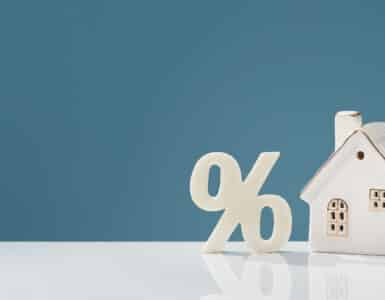Here’s a look at both:
Rate-and-Term Refinance
If you got your mortgage at a time when mortgage rates were a lot higher, it’s natural to consider refinancing when you see rates coming down, Miller says. Refinancing to lower your interest rate can certainly reduce your monthly payments, but you can’t always assume it will save you money long-term. “While the interest rate is of course important, there are costs for obtaining a new mortgage, and then there is a working future time frame over which those costs must be recovered. It really doesn’t make sense to refinance from a 4.5% rate to a 4% rate, and pay $3,000 to do so, saving just $75 per month, and then sell your home after 2 years. You wouldn’t even recover your costs, let alone save any money,” says Gumbinger. But, if you plan to keep your home for another 20 years, or if you’re refinancing to a much lower rate than you currently have, then this can be a great option for saving money.
Cash-Out Refinance
A cash-out refinance involves increasing the amount you borrow and pulling out some of the equity (or value) you’ve accrued in your home. “A mortgage is always based on the value of the home, so if your home has really grown in value since you bought it, you can get it reappraised at a higher value, then you can get a larger mortgage so that you can take some of that value out of the home.” Miller explains. Because you’re taking a loan out for more than you owe, you can spend the difference on other financial needs. Note: Under the new tax law, for the loan to qualify for the deduction in mortgage interest you need to spend the proceeds on improvements related to the home rather than, say college tuition or consolidating credit card debt.
So, What Kind of Loan do You Need?
You may have previously considered both fixed-rate mortgages (FRMs), and adjustable-rate mortgages (ARMs) For the vast majority of borrowers, it’s hard to beat the stability and simplicity of a fixed-rate mortgage. FRMs will maintain the same interest rate for the duration of the mortgage, while ARMs begin with a fixed rate for a specified amount of time (a rate that tends to be enticingly lower than the ones you might find on a FRM). But when the fixed interval of an ARM expires, your rate will be adjusted — perhaps increased — and this uncertainty is what make ARMs riskier. You have no way of safely knowing what your rate will be years down the road.
How Can You Get a Good Deal?
“If you’re looking at refinancing a mortgage, your first call should be to your current mortgage provider,” says Miller. Sometimes if you got your last mortgage recently, working with your current lender can alleviate the need for some paperwork. You’ll also want to shop around — credit unions and local banks are often active participants in this market.
“Be prepared with your list of questions to really make sure you know all the ins, outs, and costs you face when you’re going to be working on that mortgage, Miller advises. In other words, ask questions of all the prospective lenders you’re considering, and if something sounds too good to be true, ask for clarification or ask to get it in writing.
“Yes, shopping can take time and can be a bit of a pain.” Gumbinger acknowledges. “However, it’s worth the investment of time to understand: what you need, who you are as a borrower, and what the market has to offer you — so that you can know a bad deal from an average deal from a great deal.”
With Molly Povich






